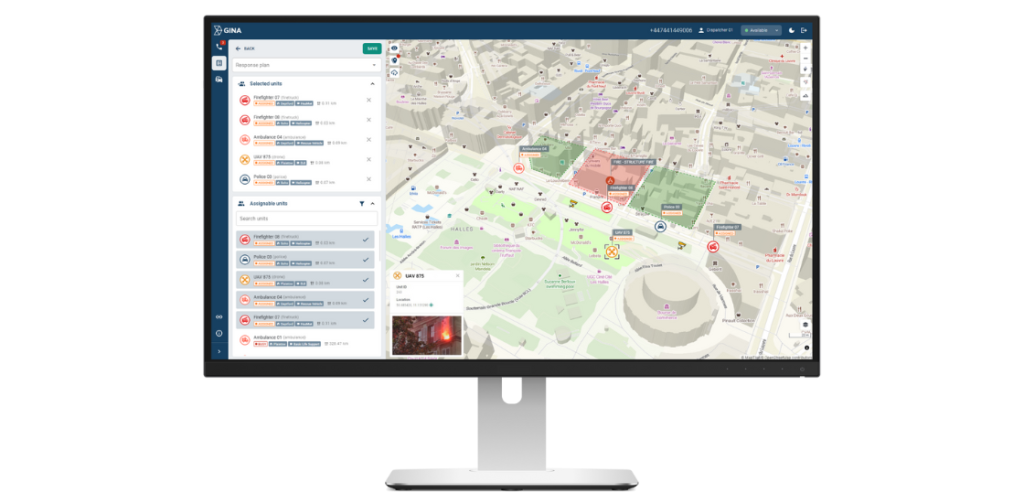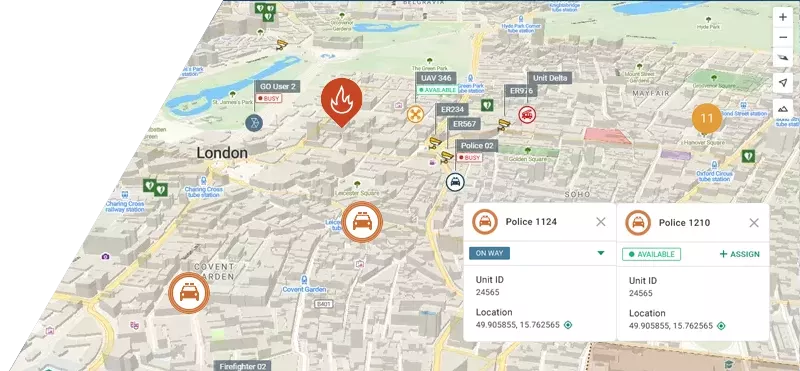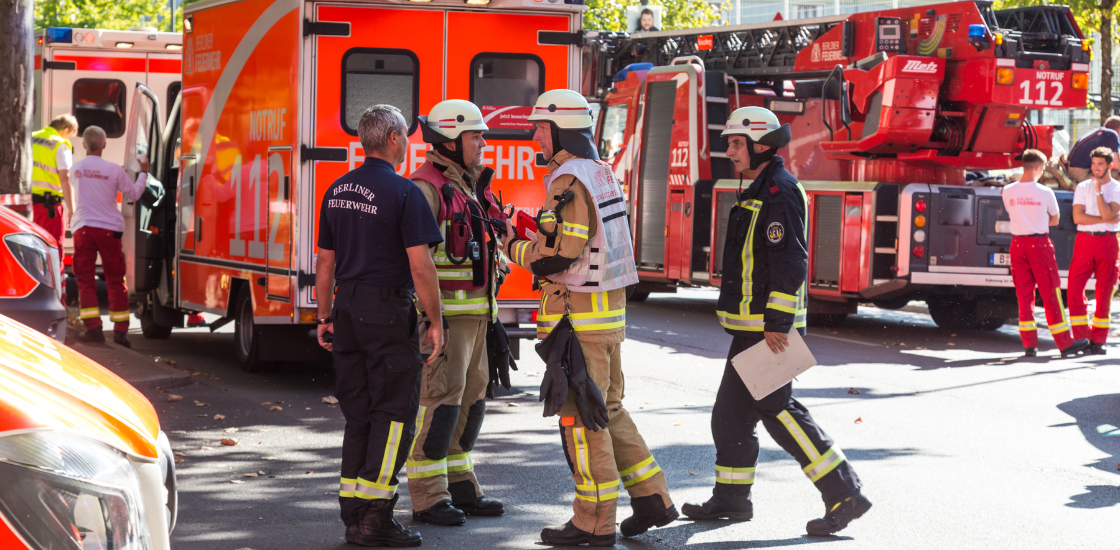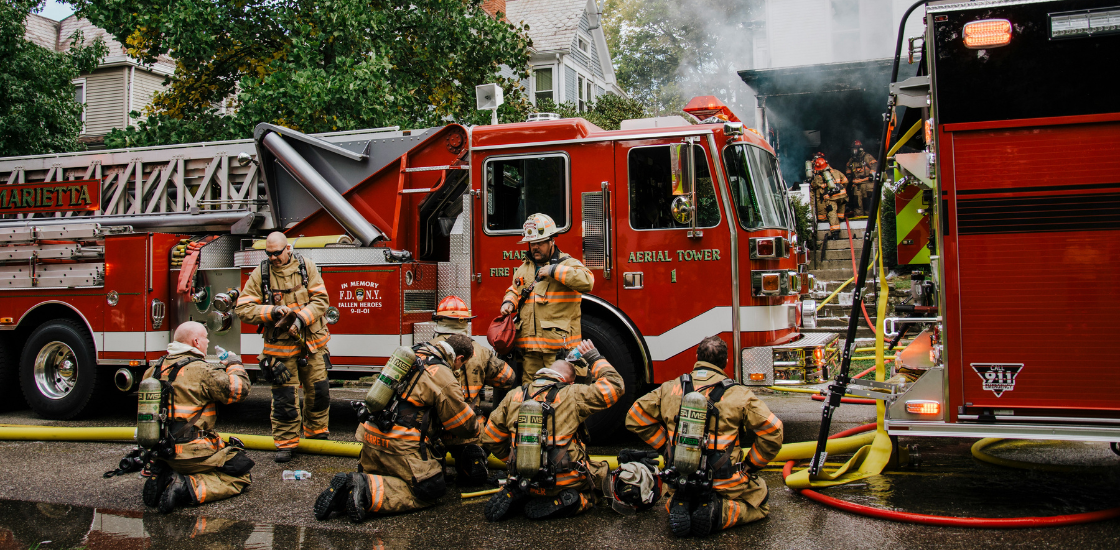Table of Contents
- The Role of AI in Emergency management
- Key AI Applications in Emergency Management
- What Are the Challenges of AI in Disaster Management?
- The Future oof AI in Emergency Management
In 2018, Google introduced its flood forecasting initiative to help mitigate the catastrophic impact of floods, particularly in India and Bangladesh. In six years, the system has proven its effectiveness and expanded to 100 countries prone to flooding, according to a blog by Vice President & Head of Google Research, Yossi Matias.
Google’s AI-powered model analyzes weather patterns, river levels, and historical data to predict floods in flood-prone regions with remarkable accuracy. Forecasts are then shared with local governments, providing valuable early warnings and supporting disaster response efforts.
Such real life applications of AI show its potential in reducing casualties, mitigating damage, and helping emergency agencies prepare and respond not only to natural disasters and other emergency situations.
The Role of AI in Emergency Management
AI’s ability to process and analyze massive amounts of data from various sources, such as weather patterns, satellite imagery, social media, and sensor networks, holds great promise. By detecting patterns, predicting potential threats, and enhancing decision-making, AI is helping emergency responders act faster and more effectively in crisis situations.
AI may be also used in automating routine tasks, such as sorting emergency calls, categorizing incidents, and analyzing patterns of previous disasters. By reducing manual workload, emergency teams can focus on critical decision-making and frontline response efforts.
In the following sections, we will explore specific applications of AI in emergency management, demonstrating how these technologies are shaping the future of disaster response and crisis preparedness.
Key AI Applications in Emergency Management
Emergencies unfold in unpredictable ways. Often demand rapid decisions and coordinated responses under extreme pressure. Today, managing disaster and emergency response without modern technologies, such as GINA, is almost unimaginable. AI is now emerging as another tool that enhances human capabilities in this field.
Let’s take a look at some of the most impactful applications of AI in emergency management.
1. Predictive analytics for disaster preparedness
AI has already proved effective in enhancing disaster preparedness by predicting events like floods and wildfires. Beside the aforementioned Google’s flood forecasting model, there are other initiatives.
Most recently, Amazon has launched an initiative in Spain’s Aragon region to reduce flood risks.
By integrating real-time data collection with sensor inputs and AI-driven analysis, the platform will track weather patterns and water flow to provide emergency services with early flood warnings. The company will also invest in modernizing infrastructure and will deploy AI to optimize agricultural water use in the region.
2. AI-Enhanced Training
Effective emergency response relies on well-coordinated efforts based on proven processes. To enhance efficiency, training first responders is considered a best practice.
First responders have long relied on advanced training simulations, such as the Advanced Disaster Management Simulator (ADMS), to prepare for real-life emergencies.
AI builds on this by creating dynamic, data-driven training environments. AI-powered virtual scenarios can simulate large-scale disasters with real-time variables, allowing responders to practice decision-making in high-pressure situations before facing them in reality.
3. AI-powered coordination
Beyond training, AI significantly enhances emergency coordination in the field by analyzing data from multiple sources to provide real-time insights.
AI-assisted traffic management systems, for instance, can optimize evacuation routes by predicting congestion and rerouting emergency vehicles.
Additionally, integrating AI into decision support tools, such as Computer-Aided Dispatch (CAD) systems, help authorities allocate resources efficiently, ensuring that emergency teams are deployed where they are needed most. Key applications include:
- Voice recognition and natural language processing – AI systems can interpret emergency calls in real time, understanding nuances and caller emotions to assess the situation’s severity. This capability reduces response times and minimizes data entry errors.
- Resource allocation and prioritization – CAD systems, such as GINA Smart CAD, utilize real-time data from IoT sensors and GPS to dynamically allocate resources. This ensures that emergencies are prioritized correctly and that responders are directed efficiently based on current conditions.

4. Real-time disaster monitoring and damage assessment
AI can analyze satellite imagery and sensor data to detect anomalies, such as smoke or rising water levels, providing immediate early warnings to potential emergencies.
A great example is an AI-driven camera network used in California to spot wildfires before they spread. This platform, named ALERTCalifornia, is a public safety program run by the University of California, San Diego.
Platform processes live camera feeds and sensor data to identify smoke anomalies, even in remote locations and during nighttime conditions when human detection is more challenging.
According to an official ALERTCalifornia website of this project, the platform detected over 1,200 fires in its first season. Remarkably, it has been able to identify fires before 911 calls in over 30% of cases, demonstrating its potential to revolutionize wildfire management by reducing response times and mitigating damage.
According to IBM, with the increasing frequency and intensity of wildfires, researchers are currently working on developing AI systems that can predict where fires may ignite and how they will spread.
AI-powered disaster monitoring like this is becoming an essential part of emergency response, helping protect lives, infrastructure, and natural ecosystems.
5. AI Chatbots and virtual assistants for crisis communication
AI chatbots and virtual assistants can play a crucial role in crisis communication by providing real-time information during emergencies, assisting in disseminating critical updates and answering public inquiries, thereby reducing the burden on emergency hotlines.
Generative artificial intelligence (GenAI) chatbots help ensure that critical information reaches affected communities promptly. For example, during the COVID-19 pandemic, AI-powered chatbot “Jennifer” was used to combat misinformation and provide verified health guidance.
Beyond emergency alerts, AI chatbots can personalize communication based on cultural and linguistic differences, improving disaster preparedness and response. Research has shown that AI chatbots tailored to different communities enhance engagement and trust, making them valuable tools in public safety campaigns.
What Are the Challenges of AI in Disaster Management?
While AI holds significant promise in emergency management, several technical challenges must be addressed to ensure its reliability and effectiveness.
Data quality and availability
AI systems require vast amounts of accurate and timely data to function effectively. In many regions, especially those with underdeveloped infrastructure, a lack of reliable data collection hampers AI’s ability to make precise predictions and support decision-making during emergencies.
Model transparency and interpretability
Many AI models function as “black boxes,” making it difficult for emergency responders to understand how decisions are made. This lack of transparency can reduce trust in AI-driven recommendations, impacting the effectiveness of crisis management. (time.com)
Integration with existing systems
Emergency management relies on coordination among multiple agencies and existing infrastructures. Integrating AI tools with legacy systems requires overcoming compatibility challenges and ensuring seamless communication between AI-driven insights and traditional emergency response protocols.
Real-time processing capabilities
Emergencies demand immediate action, yet AI systems must process and analyze large volumes of data in real-time without compromising accuracy. Enhancing AI’s ability to function under high-pressure conditions remains a significant technical hurdle.
Ethical and bias Considerations
AI systems rely on the quality and diversity of the data they are trained on. If datasets contain biases, AI-driven decisions can unintentionally reinforce disparities in crisis response, leading to unequal treatment of certain populations. Ensuring fairness in AI applications requires rigorous oversight, diverse data representation, and continuous refinement of models to mitigate bias and promote equitable emergency management.
Overcoming these technical barriers is essential for AI to reach its full potential in emergency management. Continued investment in research, collaboration between policymakers and technology companies, and advancements in AI development will be key to mitigating these challenges.
The Future of AI in Emergency Management
AI is rapidly evolving into a vital component of emergency management, offering innovative solutions for predicting, mitigating, and responding to disasters. From flood forecasting systems and AI-driven wildfire detection to emergency response coordination, the technology has already demonstrated its potential to save lives and protect communities.
However, as promising as AI is, it is not a magic bullet. Challenges such as data reliability, integration with existing infrastructure, and ethical considerations must be addressed to ensure AI serves as a trustworthy and effective tool in crisis management.
As cities and emergency agencies increasingly integrate AI into their response strategies, the focus must remain on enhancing human expertise rather than replacing it. With careful oversight and investment, AI has the power to create more resilient communities, ensuring that when disasters strike, the response is faster, smarter, and more coordinated than ever before.










